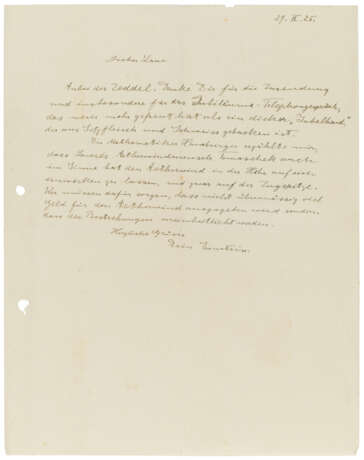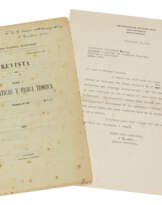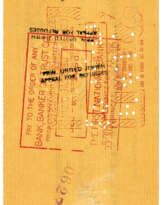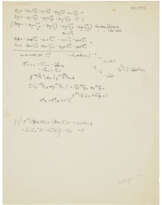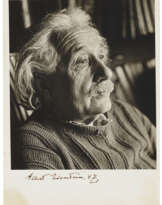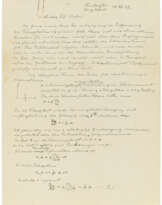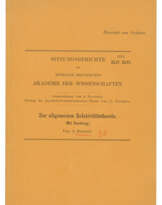ID 1249800
Lot 78 | Albert Einstein (1879-1955)
Estimate value
£ 7 000 – 10 000
Autograph letter signed ('Einstein') to Max von Laue, n.p., 29 September 1925
In German. One page, 279 x 220mm.
On the 20th anniversary 'jubilee' of special relativity, and attempts to invalidate it through the detection of 'aether drift'. Einstein thanks Laue for a letter, and 'especially for the jubilee phone conversation, which pleased me more than a thick “jubilee volume”, which is baked out of dogged persistence and sweat'. He goes on to discuss the attempts to replicate the controversial 'aether drift' experiments of Dayton Miller: 'The mathematician Hamburger told me that Lenard´s aether-drift-man Tomaschek also has it in mind to let the aether drift affect him at altitude, namely on the Zugspitze. We must ensure that not too much money is spent on the aether drift, and rather that efforts are unified'.
The letter is written 20 years almost to the day since the publication of Einstein's paper 'On the Electrodynamics of Moving Bodies', on 26 September 1905, in which he described the special theory of relativity. The American physicist Dayton Miller (1866-1941) devoted years to an obsessive attempt to detect 'aether drift' – a relative motion between a body and the medium of aether – and some of his experiments in the early 1920s appeared to give a positive value, which if true would have invalidated the special theory of relativity. 'Some of those attempting to replicate Miller’s results shared his theoretical preference for a result falsifying the theory of relativity. Among them was Rudolf Tomaschek, a student and then assistant of the anti-relativist Phillip Lenard, who hoped for a positive result when, as Einstein put it, he went “to Miller around” on the Zugspitze, in southern Germany' (Collected Papers, 15, xl). Ultimately Tomaschek's findings confirmed a zero value for aether drift, and Miller's positive readings are regarded as an anomaly. Max von Laue (1879-1960) had been appointed deputy director under Einstein of the Kaiser Wilhelm Institute in Berlin in 1922; when Einstein did not return to Germany after the Nazi takeover of power in 1933, Laue became deputy director. A staunch opponent of Nazism, he played an important role in the re-establishment of German scientific institutions after the war. Because Laue and Einstein were in almost daily contact at the Institute, letters between them are rare. Einstein's strong affection for Laue is evident in his use of the 'Du' form in German, and in his use of the Yiddish words 'Zeddel' (for 'note') and 'Sitzfleisch' ('dogged persistence') in the present letter. Not in the Collected Papers.
| Artist: | Albert Einstein (1879 - 1955) |
|---|---|
| Place of origin: | Western Europe, Germany, Europe, Switzerland |
| Auction house category: | Letters, documents and manuscripts, Medicine & science, Books and manuscripts |
| Artist: | Albert Einstein (1879 - 1955) |
|---|---|
| Place of origin: | Western Europe, Germany, Europe, Switzerland |
| Auction house category: | Letters, documents and manuscripts, Medicine & science, Books and manuscripts |
| Address of auction |
CHRISTIE'S 8 King Street, St. James's SW1Y 6QT London United Kingdom | |
|---|---|---|
| Preview |
| |
| Phone | +44 (0)20 7839 9060 | |
| Buyer Premium | see on Website | |
| Conditions of purchase | Conditions of purchase |
